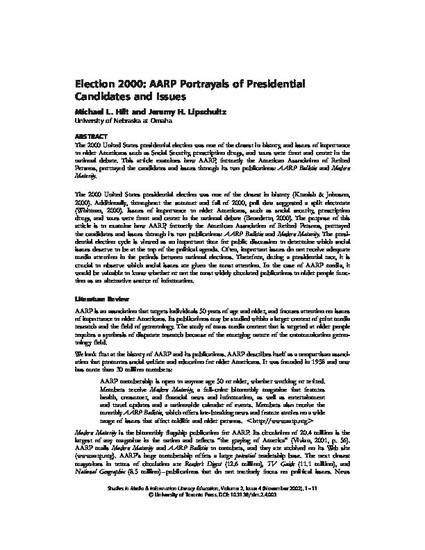
The 2000 United States presidential election was one of the closest in history, and issues of importance to older Americans such as Social Security, prescription drugs, and taxes were front and center in the national debate. This article examines how AARP, formerly the American Association of Retired Persons, portrayed the candidates and issues through its two publications: AARP Bulletin and Modern Maturity.
The 2000 United States presidential election was one of the closest in history (Kranish & Johnson, 2000). Additionally, throughout the summer and fall of 2000, poll data suggested a split electorate (Whitman, 2000). Issues of importance to older Americans, such as social security, prescription drugs, and taxes were front and center in the national debate (Benedetto, 2000). The purpose of this article is to examine how AARP, formerly the American Association of Retired Persons, portrayed the candidates and issues through its two publications: AARP Bulletin and Modern Maturity. The presidential election cycle is viewed as an important time for public discussion to determine which social issues deserve to be at the top of the political agenda. Often, important issues do not receive adequate media attention in the periods between national elections. Therefore, during a presidential race, it is crucial to observe which social issues are given the most attention. In the case of AARP media, it would be valuable to know whether or not the most widely circulated publications to older people function as an alternative source of information.
Available at: http://works.bepress.com/jeremyharrislipschultz/56/

The original article can be found at: http://utpjournals.metapress.com/content/120764/?p=8594a45b747d4df3bacc51703cb50627&pi=0.